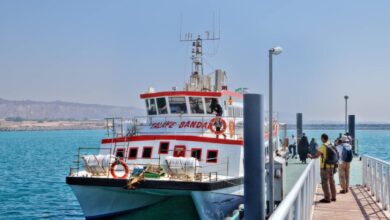
Iran’s Hegmataneh, also known as Ecbatana, has been officially recognized as the country’s 28th UNESCO World Heritage site. The decision was made during the 46th session of the UNESCO World Heritage Committee, currently held in New Delhi. The listing was approved after modifications suggested by ICOMOS and committee members from Qatar, Kazakhstan, Vietnam, Turkey, Kenya, and Rwanda. The designation was altered from “Historic Center of Hamadan” to “Hegmataneh,” thus including it in the world heritage list.
Introduction to Hegmataneh
Hegmataneh, or Ecbatana, is an ancient site linked to the capital of the Medes and later used as a summer capital by the Achaemenids and Parthians. Significant finds at the site include a massive mud-brick defensive wall and a grid-pattern urban layout. Located under the Alvand branch of the Zagros Mountains, Hegmataneh has a continuous 3,000-year history and contains rare remains of Median culture from the 6th and 7th centuries BCE.

The Legacy of the Medes
UNESCO highlights Hegmataneh’s importance as the site where the Median Empire was established. The Medes, an ancient race often mentioned in historical texts, inhabited this city.
Historical References
- Herodotus (5th Century BCE): Described Ecbatana as a city with seven concentric walls, built by the first Median king, Deioces.
- Nabonidas Chronicle (5th Century BCE): A Babylonian clay text details how Cyrus the Great defeated the last Median King, capturing Ecbatana and its treasures.
- Old Testament: The Medes are mentioned in the Book of Daniel, featuring stories involving King Belshazzar and Darius the Mede.
Archaeological Discoveries
Excavations in Hegmataneh have yet to reveal significant artifacts from the Median or Achaemenid eras. The topography of modern Hamadan suggests much of the historical city lies beneath the current urban area.

Tourist Implications
Hegmataneh is not a typical tourist destination with statues or well-kept artifacts, as most structures are made of mud bricks. While the on-site museum has some valuable pieces, the best artifacts are housed in Tehran. Despite its historical importance, Hamadan lacks a major tourist attraction but remains a worthwhile stop for deeper historical explorations, including the bazaar, tower tombs, and the 14th-century Tomb of Esther and Mordecai.
Evaluation and Recommendation by UNESCO
ICOMOS, the advisory body to UNESCO, raised concerns in 2023 about the nomination file, requesting additional information on authenticity, conservation documentation, boundaries, legal protection, local community participation, and the historical fabric of Hegmataneh.

Changes to the Hegmataneh File
Initially, the title “Cultural and Historical Landscape from Hegmataneh to Hamadan” included Hegmataneh Hill, the bazaar, and 140 historical sites. This title was later changed to “Hegmataneh and the Historic Center of Hamadan,” adjusting the content and area. The 46th session of the UNESCO World Heritage Committee officially registered “Hegmataneh” with a 75-hectare area and a 287-hectare buffer zone.
UNESCO World Heritage Sites in Iran
Iran’s other 27 UNESCO World Heritage sites include:
- Chogha Zanbil
- Persepolis
- Naqsh-e Jahan Square in Isfahan
- Takht-e Soleyman
- Bam Cultural Landscape
- Pasargadae
- Soltaniyeh Dome
- Bisotun Inscription
- Armenian Monastic Ensembles
- Shushtar Historical Hydraulic System
- Tabriz Historic Bazaar
- Sheikh Safi al-Din Khānegāh and Shrine Ensemble in Ardabil
- Persian Gardens
- Jameh Mosque of Isfahan
- Gonbad-e Qabus
- Golestan Palace
- Shahr-e Sukhteh (Burnt City)
- Meymand Cultural Landscape
- Shush
- The Persian Qanat
- Lut Desert
- Historic City of Yazd
- Sassanid Archaeological Landscape of Fars Region
- Hyrcanian Forests
- Trans-Iranian Railway
- Cultural Landscape of Uramanat
- Historical caravanserais in Iran
Conclusion
The 46th session of the UNESCO World Heritage Committee, held from July 21 to July 31, 2024, in New Delhi, India, is evaluating 27 nominated sites for World Heritage status and assessing 124 already inscribed sites, including those on the List of World Heritage in Danger.






